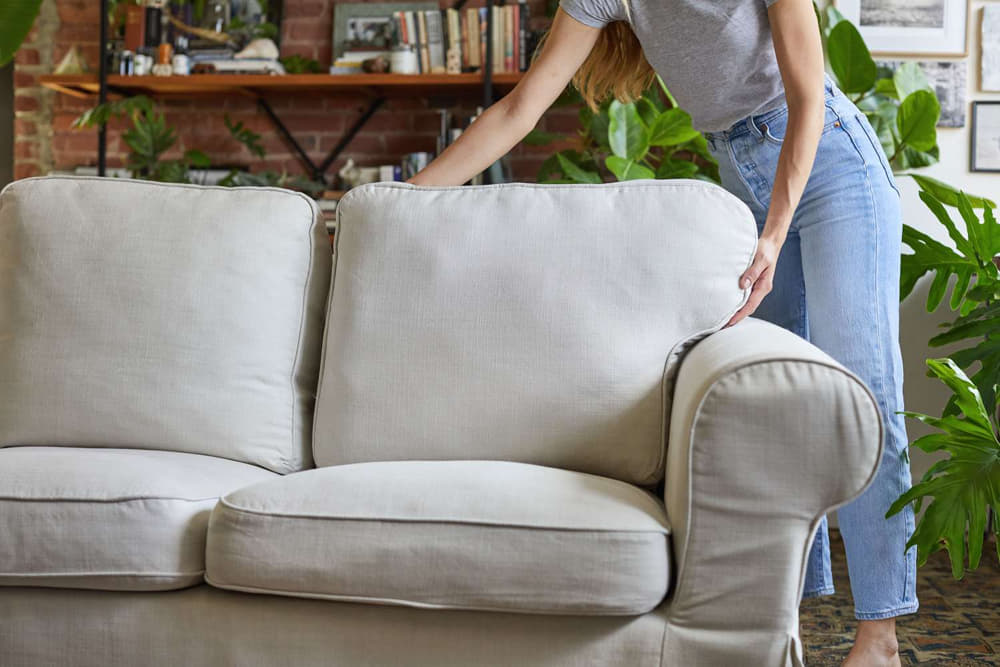
There are many reasons why you might want to get your couch cushions restuffed. You may have just moved into a new apartment and need to update the furniture, or you may be getting ready for a party and need more seating. Whatever your reason, it is important to know how to go about it.
The first step is to take measurements of the couch cushions that need to be restuffed. Then, go out and purchase the same size of pillow form as the old one. This will ensure that the new foam will fit just right in your couch cushion cover. Once you have purchased all of the necessary materials, you can start by removing all of the old stuffing from inside of each cushion cover and then place a single layer of fabric over them before stuffing them with new foam.
Can you add fluff to couch cushions?
Place two cushions in at a time, if possible, for a more balanced load. Place a few clean tennis balls in a pillowcase and tie a knot in the end. Place the pillowcase with balls, as well as the couch cushions, in the dryer using a gentle cycle. Check the cushions every 15 minutes or so and fluff them by hand.[1]
How do you fix couch cushions that are sinking?
Remove the cushion from the couch. Unzip the side of the cushion. Remove the foam. If the foam is wrapped in batting, remove the batting and the netting as well. Replace the foam with a high-density foam. Re-wrap if needed. Reinsert the foam and batting into the cushion.[2]
What is the best filling for sofa cushions?
Foam wrapped in a layer of fibre (SupaWrap) is the most recommended seat cushion filling as it provides the support of foam and the softness of fibre, it is also cheaper than feather wrap. The look of a foam and fibre cushion will be similar to foams clean lines but with the added plumpness of fibre.[3]
Can you plump up cushions?
But what about plumping them up instead? With minimal effort, your cushions can become cosy and luxurious again. If your scatter cushions need plumping, vacuum them, air them on a washing line and then throw them down on all sides to help the fibres separate.[4]
How do I make my cushions fluffy again?
Increase Fluffiness With A Tennis Ball In A Sock Put a tennis ball inside a tube sock and throw it in your dryer along with your pillow. The tennis ball will bounce around inside the dryer and press against your pillow, breaking up any pieces inside and increasing the fluff factor of your pillow.[5]
Can you replace couch cushions with memory foam?
The cushions are one of the first parts of the sofa to show age. All foam and filler will sag and deteriorate, leaving seat impressions and making the couch look old before its time. Replacing the foam or filler with memory foam is a project that will rejuvenate the couch and add comfort and longevity to the piece.[6]
Why do my sofa cushions sink?
If you spend most of your time sitting in one place, your body weight is enough to make the fibre filling in the cushion compress and start to sag. Turning the cushions every few days can help even out wear and tear on both sides so it doesn’t sag over longer periods of time or under heavy use![7]
Why is my couch sinking?
A sagging couch could be the result of worn out cushions, old springs, or a bad frame. If the problem is the cushions, you’re in for an easy fix. If the cushions seem fine upon inspection, you may have to replace the springs or the frame. Depending on the level of damage you may need to replace the entire couch.[8]
How much does it cost to have a couch Restuffed?
It costs about $200 to $300 to restuff a couch, depending on the type of foam or padding used for the job. Restuffing a couch may be required over time if the fabric wears down.[9]
Which cushion filler is best?
Feather – as the softest sofa filling, feather is a popular choice for those who like to sink into their sofas. Duck feathers are typically used for sofa cushions while down is mainly used in decorative scatter cushions.[10]
What density foam is best for sofa?
Summary: High Resilience foam at 2.8 – 3.0 lb. per cubic ft. is the best foam to use for cushions. It is highly responsive for a quick return action and will provide an extra bounce. When it comes to the best foam for sofa cushions, High Resilience foam claims the title.[11]
Why do cushions go flat?
Like many things in life, age can cause couch cushions to sag and flatten. They do not rebound and make getting up from the couch difficult. Nothing dates your couch quicker than tired, flat cushions.[12]
